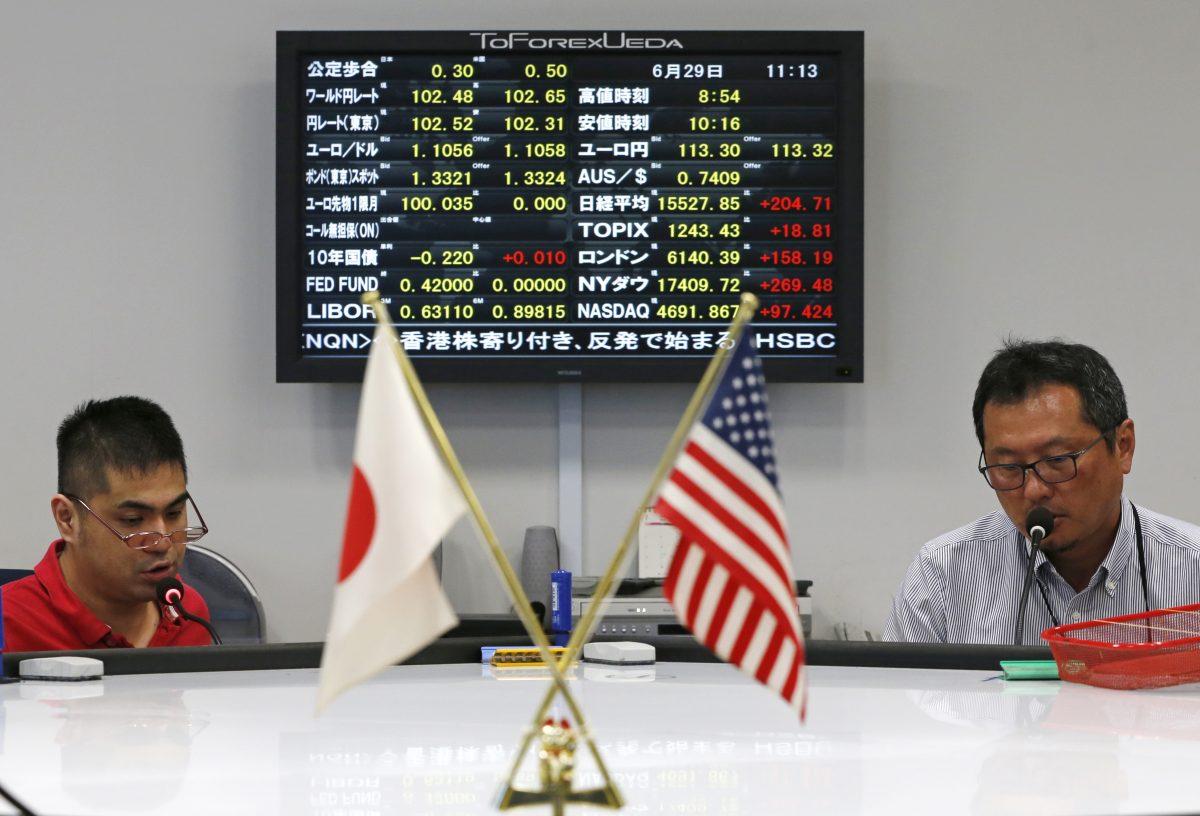U.S. stocks and funds are leading the world in the widespread selloff across global financial markets. From the Dow Jones Industrial Average to the Nasdaq Composite Index, U.S. equities are recording greater losses than benchmarks in foreign markets.
Year-to-date, the Dow has plunged by 12 percent, the S&P 500 has slumped by nearly 18 percent, and the Nasdaq has cratered by about 28 percent.
By comparison, the UK’s FTSE 100 Index is up by more than 1 percent, Spain’s IBEX 35 Index has dipped by 0.1 percent, the Nikkei 225 Index has lost 7 percent, and the TSX Composite Index has tumbled by roughly 4 percent.
This is the third worst stock market selloff, according to a note by Yardeni Research. In late 2018, the S&P 500 plunged by 19.8 percent, and in 2011, it fell by 19.4 percent.
In addition, major MSCI indexes that track global large- and mid-cap stocks have outperformed the S&P 500, even in U.S. dollar terms.
For example, The MSCI UK Index, according to the research note, is down by only 5.1 percent (USD). In local currency, the UK Index was up 2.3 percent.
The MSCI Japan Index was down by 15.6 percent (USD) and 6.3 percent (local currency).
MSCI’s global equity index excluding the U.S. market and the MSCI’s emerging markets index dropped by 14.9 percent and 16.1 percent, respectively, in U.S. dollar terms.
Only MSCI EMU Index that represents large- and mid-cap stocks in developed markets in the European Union underperformed S&P 500, falling by 20.9 percent (USD) year-to-date.
Canadian equities are also performing better than their U.S. counterparts. The Horizons S&P/TSX 60 Index ETF (U.S.), which invests in the Royal Bank of Canada, Enbridge, Canadian National Railway, and Brookfield Asset Management, is down by only 4 percent.

But what’s causing the retreat from record highs in U.S. equities?
Edward Yardeni, president of Yardeni Research, told The Epoch Times that it “seems to be mostly attributable to the underperformance of the S&P 500 Growth MegaCap-8.” These are eight of the largest companies that are contributing to the market’s decline: Alphabet, Amazon, Apple, Meta, Microsoft, Netflix, Nvidia, and Tesla.
Forward price-to-earnings (P-E) multiples that measure stock valuations compared to forecasted earnings also spotlight a contrast between the U.S. stocks and foreign MSCI composites, Yardeni Research noted.
The MSCI USA Index has a forward P-E ratio of 17.0, compared to the MSCI UK All Cap Index of 10.1.
This could be the beginning of European value stocks topping U.S. growth equities over the next decade, according to Andrew Dickson, CIO of Albert Bridge Capital.
“So it stands to reason, or at least consider, that in a more normal market environment, Europe might have a lot of catching up to do—particularly some of the value stocks across the continent.”
What’s the rationale behind global funds performing better than the United States?
The chief difference between U.S. and European markets has been monetary policy, according to Komson Silapachai, a partner at Sage Advisory Services. The Federal Reserve has been aggressively hawkish to fight inflation, while the European Central Bank (ECB) only recently unveiled plans to increase the deposit rate from subzero territory to combat rampant price inflation.
“This differential in central bank policy stance is the main factor in the relative performance of European and U.S. equities, which we think will revert over the next three months as the ECB begins raising its deposit rate,” Silapachai told The Epoch Times.
William Stack, a financial adviser at Stack Financial Services, agrees that the United States has been faster than Europe to hike rates.
Stack also told The Epoch Times that investment performance is typically correlated with cycles, so U.S. stocks compared to foreign equities have been due for a reversal.
What Sectors Are Rallying?
But while it might appear that the entire U.S. stock market is in bear or near bear territory, there are a few sectors that are keeping investors’ decimated portfolios on life support, driven by soaring commodity prices and traders seeking shelter from the flood of red ink.The energy industry is booming and many energy funds are doing remarkably well this year, despite the raging selloffs everywhere else.
Year-to-date, the Energy Select Sector SPDR Fund is up by 47 percent, the iShares Global Energy ETF has rallied by 40 percent, and the Vanguard Energy Index Fund ETF has soared by 45 percent.
Stocks and funds that specialize in agricultural commodities, such as corn, soybeans, and wheat, have also done well in 2022.
The Invesco DB Agriculture Fund has added close to 13 percent year-to-date. The iShares MSCI Global Agriculture Producers ETF, which has positions in Nutrien, Mosaic, CF Industries Holdings, and John Deere, has picked up by nearly 9 percent.
Utilities have also been on an exceptional run in 2022, with the S&P 500 Utilities subsector outperforming the broader S&P 500 group for much of the year. The subsector, offering investors an escape from the overall market volatility, has edged up by more than 2 percent.
The iShares U.S. Utilities ETF has climbed by 2.5 percent on the year. This fund gives shareholders access to Nextera Energy, Duke Energy, Southern, Dominion Energy, and Waste Management.
What might be surprising to some is that most of the precious metals have failed to join the broader commodities bull run this year. Aside from gold, which is up by more than 2 percent, the metals market has slumped, such as copper (minus 2.9 percent), silver (minus 5.4 percent), and platinum ( minus 1.8 percent).
Many analysts anticipate more mayhem in the financial markets for the rest of 2022. Investors will be searching for opportunities in an environment where some of the top-performing assets of the past two years are leading the market rout.





